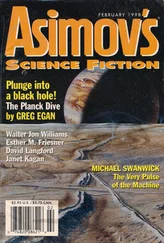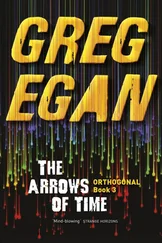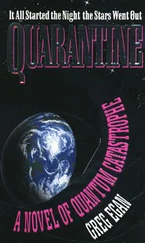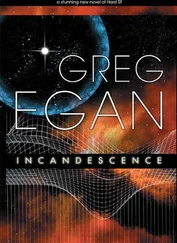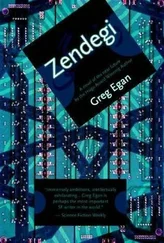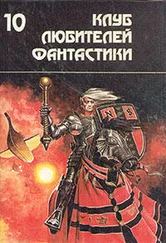Greg Egan - The Eternal Flame
Здесь есть возможность читать онлайн «Greg Egan - The Eternal Flame» весь текст электронной книги совершенно бесплатно (целиком полную версию без сокращений). В некоторых случаях можно слушать аудио, скачать через торрент в формате fb2 и присутствует краткое содержание. Жанр: Фантастика и фэнтези, на английском языке. Описание произведения, (предисловие) а так же отзывы посетителей доступны на портале библиотеки ЛибКат.
- Название:The Eternal Flame
- Автор:
- Жанр:
- Год:неизвестен
- ISBN:нет данных
- Рейтинг книги:4 / 5. Голосов: 1
-
Избранное:Добавить в избранное
- Отзывы:
-
Ваша оценка:
- 80
- 1
- 2
- 3
- 4
- 5
The Eternal Flame: краткое содержание, описание и аннотация
Предлагаем к чтению аннотацию, описание, краткое содержание или предисловие (зависит от того, что написал сам автор книги «The Eternal Flame»). Если вы не нашли необходимую информацию о книге — напишите в комментариях, мы постараемся отыскать её.
The Eternal Flame — читать онлайн бесплатно полную книгу (весь текст) целиком
Ниже представлен текст книги, разбитый по страницам. Система сохранения места последней прочитанной страницы, позволяет с удобством читать онлайн бесплатно книгу «The Eternal Flame», без необходимости каждый раз заново искать на чём Вы остановились. Поставьте закладку, и сможете в любой момент перейти на страницу, на которой закончили чтение.
Интервал:
Закладка:
“When we have a system of two luxagens,” Assunto began, “we need to think of it as a wave that depends on the positions of both particles. So if one particle is mostly here and another is mostly there , we need the wave to have a bump where the combination of positions spells that out.”
He sketched what he meant.
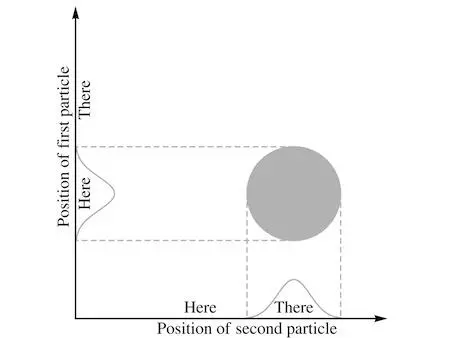
“Right,” Carla said. “That’s how I think of it too.”
“But there’s a problem,” Assunto claimed. “Suppose we compare that with another wave, where we swap the two particles.”
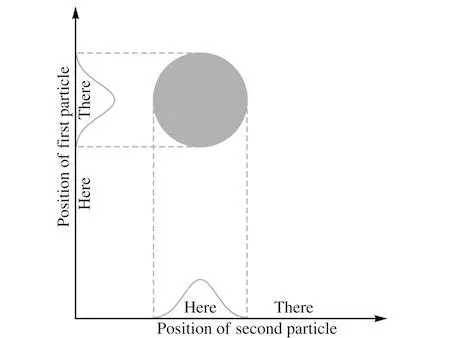
“That’s really the same thing,” Carla protested. “A luxagen is a luxagen; it makes no sense to say that it’s the ‘first luxagen’ in one location and the ‘second one’ in the other. Unless they have different spins, and you’re using that to tell them apart?”
Assunto said, “No, no. Forget about spins for the moment, or just assume the spins are identical. Take it as given that we really can’t tell these luxagens apart.”
“Then the two situations are exactly the same,” Carla replied.
“So you’re saying there are two different waves that can be used to describe the same physical situation?”
“Yes,” Carla insisted. “It’s just a convention, a naming scheme: you have to make a choice, but the choice itself makes no difference.”
“All right,” Assunto agreed, though his assent sounded distinctly provisional. “But now suppose I want to compare the wave for this pair of luxagens with the wave for another pair that are in roughly the same positions. How exactly should I make the comparison? Which of the two waves should I use in each case? There are four possibilities in all. Half those possibilities give the two pairs of luxagens very similar waves… while the other half give them very different waves!”
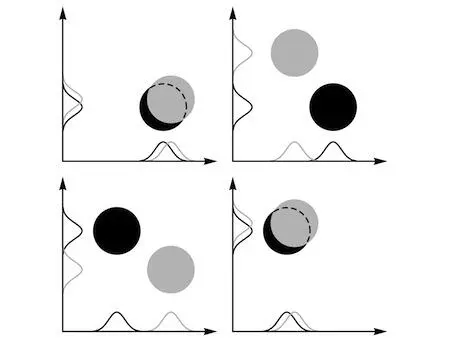
Carla thought for a while. “Surely you just need to use the same scheme for both? I mean, it’s obvious that there ought to be some overlap between the two waves—and if you use different schemes there’s no overlap at all.”
“But if you can’t tell the luxagens apart,” Assunto pressed her, “how do you define ‘the same scheme’? How do you actually pick which luxagen of the pair gets its position assigned to which axis?”
“Hmm.” He’d forced her into a contradiction; she’d claimed the choice of schemes didn’t matter, but now she’d starting talking about the importance of selecting the right one, case by case.
“Do you have to peek at their locations first, then make sure you give the same axis to whichever particles are closest together?” Assunto was gently mocking her now.
“Hardly.” Carla stared at the four diagrams. She was starving, and she’d barely slept for the last three nights, but she wasn’t going to let him make a fool of her with this problem.
“You use both schemes,” she said finally. “Simultaneously. You add the wave where you use the first axis for the first particle to the wave where you use it for the second particle.”
She sketched the idea.

“The wave for the whole system is completely symmetrical,” she said. “It makes no difference if you swap the axes, or swap the particles. And when you compare two situations with two particles in roughly the same two places, you’re guaranteed to get a sensible result with some overlap between the waves.”

“I think you’re right,” Assunto said. He sounded pleased that they’d reached the same conclusion—but he wasn’t yet finished with the subject. “That’s one way of doing wave mechanics with identical particles.”
“ One way?”
“It looks like the most natural choice,” he said. “But I don’t believe it’s the only one. What about this?”
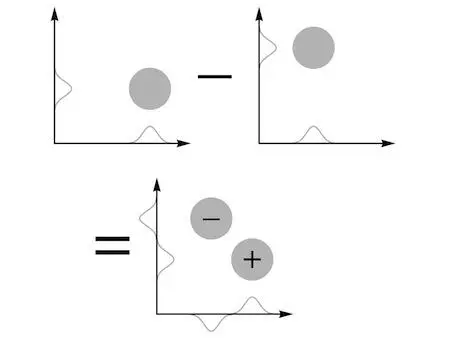
“You subtract the waves instead of adding them?” Carla was confused. “But subtract them in what order? Aren’t you asking for the same problem again: which of two identical particles do you call the first?”
“No, because it makes no difference ,” Assunto replied. “If you change the order, you just turn the whole wave upside down—and an overall change of sign like that has no effect on the physics of the wave.”
That was true. “But what’s the point?” Carla asked. “You end up with a wave with two bumps of opposite sign, instead of two identical bumps. The mathematics becomes a bit more complicated, but the final answers all turn out the same.”
“The final answers don’t depend on putting the particles in any particular order,” Assunto said. “But what makes you think they’re the same when you subtract the schemes as when you add them?”
Carla examined the diagram again. “If the particles get close together, the two waves you’re subtracting start to overlap.”
“Yes.”
“And if they’re in exactly the same state ,” she realized, “you get nothing, zero.”

“Precisely.” Assunto buzzed softly. “Does that remind you of anything?”
“The Rule of One,” Carla said. “So you’re saying that you can never have two luxagens in the same state, because they follow this subtraction scheme, where the total wave for the pair would vanish?”
“Yes!”
“But why? Why can’t they follow the addition scheme?”
“It must be linked to the luxagen’s spin somehow,” Assunto said. “Think about the similarities! Take a luxagen, with spin of a half, and rotate it by a full turn: the rotation gives you the opposite of the original luxagen wave. A transformation that leaves most things unchanged leads to a change of sign. And now it turns out that we can get the Rule of One if we assume that swapping two luxagens in a pair —another transformation that might be expected to have no effect at all—also changes the sign of the overall wave.”
Carla remained silent, but she didn’t doubt his claim. These things could not be empty coincidences; Assunto was drawing close to a beautiful mystery.
He said, “I think we’re on the verge of explaining all the different properties of luxagens and photons. Photons are simply jumps between the energy levels in the light field, but with this clue I think there’s a chance we’ll find a way to see luxagens in the same terms. I used to believe that that was absurd, that the two things were completely incomparable… but look at the difference we can get from one small change in the way the wave is constructed! With photons, you add the different ways you can arrange them, so there’s no problem if a dozen photons are in the same state—it just means pushing one particular mode of the light field up a dozen energy levels. With luxagens, what we need to do is find the mathematical twist that stops you raising the energy of each mode once you’ve taken it to the first level—a way of guaranteeing that there’s either a single luxagen in that state, or none at all. Once we’ve translated the Rule of One into the language of fields, everything will be unified into a single picture.”
Читать дальшеИнтервал:
Закладка:
Похожие книги на «The Eternal Flame»
Представляем Вашему вниманию похожие книги на «The Eternal Flame» списком для выбора. Мы отобрали схожую по названию и смыслу литературу в надежде предоставить читателям больше вариантов отыскать новые, интересные, ещё непрочитанные произведения.
Обсуждение, отзывы о книге «The Eternal Flame» и просто собственные мнения читателей. Оставьте ваши комментарии, напишите, что Вы думаете о произведении, его смысле или главных героях. Укажите что конкретно понравилось, а что нет, и почему Вы так считаете.

